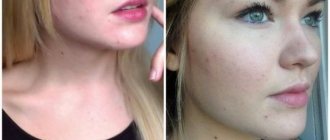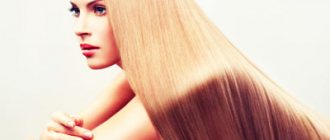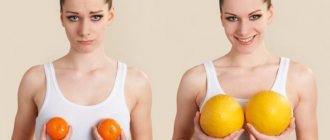Poets glorified female beauty in their poems, men fought duels for the honor and dignity of their beautiful ladies, some rulers conquered states to gain the right to possess a captivating beauty, palaces and castles were built for other luxurious women.
It's all because of the enchanting female beauty. What is beauty and what is an attractive woman like? If for the Renaissance the famous curvaceous Rubensian woman was the standard of beauty, then in ancient Egypt a slender and tall girl with a boyish figure was considered attractive. In different eras, the standard of female beauty has changed greatly. A couple of decades ago, slender models with measurements of 90-60-90 were in fashion. The fit Naomi Campbell, Cindy Crawford, and Kate Mocc ruled the fashion stage. In recent years, fashion has dictated its increasingly demanding conditions. In order to comply with fashion trends, girls were forced to go on debilitating diets. And today, anorexic young ladies are being replaced by plus-size models, girls with an hourglass figure or an athletic body. Nowadays, such plump stars as Beyoncé, Kim Kardashian, and Ashley Graham are at the peak of popularity. Moreover, some celebrities resort to plastic surgery in order to have even more magnificent breasts or butts.
Time does not stand still and now fashion trends are rapidly replacing each other. But it was not always so. In earlier times, ideas about female beauty could remain unchanged for several centuries. I invite you to plunge into history and trace how the standards of female beauty have changed in the process of human development.
The standard of beauty for an ancient woman
The Paleolithic Venus can rightfully be considered the very first standard of female beauty. This is a prehistoric figurine of a woman made by an ancient man. This is how the men of that time saw a beautiful woman - with wide hips, massive breasts hanging under their own weight and an immense belly. Apparently, ancient men looked at women simply, instinctively - they are large, which means there is enough food, they will not die of hunger, they will give birth to children and leave. This is not surprising, because the main occupation of that time was survival. As the quality of life improved, survival took a back seat. Society was divided into rich and poor, and some women had a lot of time and conditions to take care of their appearance.
Cleopatra was considered the standard of female beauty in Egypt. A thin, tall woman with narrow boyish hips, small breasts and a long swan neck - this was the woman who personified the ideal of beauty of ancient Egypt. The face of the ancient Egyptian beauty was thin with straight features, high prominent cheekbones and full lips. The lady's eyes were given an almond shape by drawing long arrows with black or green paint. To make their appearance noble, women bleached their skin to a light yellow hue. It was believed that an unemployed lady from high society could afford to be exposed to the scorching sun as little as possible. The Egyptians of that time walked barefoot, and to hide their black heels, ladies had to paint them over.
The standard of female beauty of the Middle Ages
In the era of the abstinent Middle Ages, fashion for ideals of female beauty, like everything else of that time, was dictated by the church. Christianity required a woman to be faded, modest and shapeless. Bright and beautiful girls of that time were mistaken for witches and burned. Thin, thin, with missing breasts, pale and submissive - this is the ideal of a medieval woman.
The girls wore shapeless dresses that hid their assets. The large breasts were pulled in tightly. The standard of female beauty is a small belly, as a symbol of pregnancy. The girls hid their bright blush under whitewash. A high forehead was considered beautiful, and fashion-conscious ladies shaved off the hair above the forehead and eyebrows. This gave the face greater openness and humility. To lengthen the neck, the hair on the back of the head was also shaved. From the paintings of that era, pale, meek girls and women in wide, shapeless dresses look at us - this is the standard of beauty of the Middle Ages.
HOW WOMEN'S BEAUTY CHANGED IN THE MIDDLE AGES
In the Middle Ages, women spent a lot of time in prayer vigils, fasted and seemed like a corpse, because then deathly pallor and terrible thinness were valued. The ideal was the complete absence of any roundness in principle. For example, in Spain, girls had lead plates placed on their chests at night to prevent them from developing. In Germany, wooden plates were used for this. This is how they were described then: “Girls swaddle their breasts tightly with a bandage, because full breasts are not cute to the eyes of men.”
The standard of beauty of the Renaissance
Fortunately, the times of the ascetic Middle Ages have been replaced by an era of cultural revival and a curvy, healthy female body is coming into fashion. Thinness and pallor are considered signs of illness. The standard of beauty of the Renaissance is the Rubensian woman - tall, plump, with broad sloping shoulders, small breasts and a prominent belly, powerful thighs and calves, narrow ankles and small legs. The skin is pink and radiant with health. The hair is light, thick, long.
THE IDEAL OF BEAUTY OR HOW WOMEN'S BEAUTY CHANGED IN THE XX CENTURY
After almost a century, men got tired of crushing their curvy figures, and the plump ones were replaced by nervous, passionate and demonic ladies.
In the 20s of the 20th century, girls began to resemble greyhounds: a thin figure, long legs, short haircuts emphasizing the length of the neck, eyes lined with pencils, thin plucked eyebrows and pearl necklaces around the neck.
But after the Second World War, everything changed dramatically: thinness was terrifying. Most likely, this happened due to lack of food during the war. Instead of the cold divas of previous times with shoulder pads and small breasts, graceful fairies with small heads, sloping shoulders, large high breasts and wasp waists appeared on the catwalk. In general, men again began to be attracted to well-fed but slender girls:
19th century beauty standard
The end of the 19th century was marked by a technical revolution. Progress comes not only to industry, but also to other areas, including influencing the standard of a woman’s beauty. Girls become more liberated, fight for their rights, and begin to work on an equal basis with men. A figure with pleasing curves and a thin waist becomes attractive. Ladies of the 19th century made great sacrifices to achieve the standard of female beauty of that time - a waist of 55 centimeters.
From Venus to Barbie: how the standards of female beauty have changed and what will happen to them in the 21st century
Standards largely determine our lives: how thick should the walls be in the house and the potatoes at McDonald's, how much time should we spend on vacation and in the solarium, where is it better to get treatment and drink a coffee alternative. On the one hand, life without standards would turn into chaos, but on the other hand, is everything really okay with us now? Moreover, the desire to calculate everything, fit it into a certain framework and document it does not bypass even such vague and subjective concepts as female beauty.
The first such examples of the ideal are considered to be primitive figurines made of stone or clay, which are called “Paleolithic Venuses” - their age reaches 35 thousand years BC.
The figurine represents a woman of short stature, plump or pregnant, with large breasts and hips - one who could give birth to numerous and healthy offspring.
The figurine represents a woman of short stature, plump or pregnant, with large breasts and hips - one who could give birth to numerous and healthy offspring.
Thus, genes played a cruel joke on the very first standard of beauty - not even a woman, but a female was considered attractive. Scientists explain this by saying that people belong to the K-strategy species. Its essence lies in the fact that organisms reproduce only when they have the resources for this, in an environment that is characterized by a certain constancy. The population of the species is always stable and optimally close to constant. If any threat is looming, the function of procreation is suspended. At the genetic level, this is explained by the fact that if the offspring were born at the wrong time, then, despite the time and effort spent, they may not survive, so it is worth waiting until better times. Surprisingly, this scheme has worked throughout human history.
Take, for example, Ancient Egypt. Civilization arose on the banks of the Nile around 4 thousand years BC, and its prosperity was directly related to the seasonal floods of the river, which contributed to agriculture. In addition to irregular harvests, Egypt was in a state of almost constant wars, which did not deplete the number of cities, but were a kind of regulator of overpopulation.
The standard of female beauty of that time is strikingly different from the “Paleolithic Venuses” : on the walls of temples and tombs you can see repeated images of short, thin women with small breasts, narrow hips, and short hair. According to the same K-strategy theory, in times unfavorable for childbearing, partners who are unsuitable for starting a family and procreation are considered attractive. Thus, the relevance of the standards can be compared to a zigzag curve, the upper peak of which means stability and the Venus woman, and the lower peak means change and an asthenic body type.
You can find out what kind of woman was considered ideal in Ancient Greece from numerous sculptures of Aphrodite, the goddess of love and beauty: with a height of 164 cm, her parameters were 86-69-93.
Greece is not called the cradle of European civilization for nothing. Despite the fact that during its Classical period it was one of the most densely populated places on earth, the country was distinguished by a wealth of flora and fauna, which made famine almost impossible here. Frequent military operations also left their mark: due to battles that destroyed entire cities, the need for new warriors was constant. Therefore, the Greek standard of that time was a slender, but not thin woman with correct proportions and features, whose appearance speaks of a healthy and strong body.
In the Middle Ages, women often plucked their eyebrows and shaved their hair to lengthen their foreheads and make their faces more oval, which was believed to be that of the Virgin Mary, the only representative of the fair sex whom they were allowed to imitate.
As for the Middle Ages, over its long period the standards and ideals of beauty changed repeatedly. Thus, the asceticism of Christianity replaced the body-oriented antiquity. The Church categorically forbade caring about appearance, associating it with the sins of voluptuousness and pride. During this period, Europe experienced numerous epidemics, religious wars and constant shortages of food, which also affected the physical condition of people. Paired with strict church canons, this led to the dominance of a standard of beauty in which beauty itself was absent: women plucked their eyebrows and shaved their hair to lengthen their foreheads and make their faces more oval, as was believed to be the case with the Virgin Mary, the only representative of the fair sex which one was allowed to imitate. As for the figure, the favorites were thin, short girls without pronounced round shapes. Those who were not deprived by nature were obliged to hide it under numerous clothes - a manifestation of beauty could lead a woman straight to execution.
The thaw came with the Renaissance. As natural and social disasters have slowed down and more attention has been paid to raising children, priorities have changed. Botticelli, Titian, da Vinci and other artists of this period return the earthly embodiment of female beauty to the pedestal instead of the incorporeal spiritual one: a lush white body, long brown hair, wide hips and protruding breasts. It is noteworthy that there are no references to the ideals of male beauty at this time - a man was identified with other qualities, for example, valor or courage. Beauty becomes a gender privilege, turning the female sex into the beautiful.
As you can see, canons alternated with the eras , placing either a woman-mother or asexuality in its various forms on the pedestal of beauty. Thus, the twentieth century is another clear confirmation of how quickly standards changed. Rapid industrial progress, which led to active emancipation, led to the fact that after the First World War, a woman of the androgynous type of beauty became the standard of beauty: a thin teenage figure, narrow hips, small breasts, short hair. The symbol of that time was Greta Garbo, whose graceful profile and languid gaze drove entire countries crazy.
The Second World War and several years after it became a time when many states had no time for the canons: women actively took on not only male roles, which required strength and endurance, but also elements of appearance. After that, almost every decade, the standard of beauty changed: in the 50s, it became Marilyn Monroe, revealing the personification of the cherished 90-60-90, the 60s passed under the sign of the model Twiggy, who was nicknamed “twig” for her excessive thinness, a symbol Madonna became the 80s, bringing back the fashion for feminine rounded forms, and the 90s are called the decade of heroin chic, the sign of which was the emaciated figure of Kate Moss.
It would seem that the standards today, like thousands of years BC, are dictated by the complex mechanism of nature, which thousands of scientists around the world are still racking their brains to study. But at the same time, for a long time exclusively developed European countries were engaged in the circulation and propaganda of the image of the ideal. The consequences of such a policy are very diverse, starting from the fact that almost every white person in the middle latitudes all Asians seem to have the same face, and the representatives of the eastern peoples themselves actively lighten their skin, turn into blondes and wear blue lenses - under the influence of world standards, of course.
The imposition of these standards sometimes takes place in a completely unexpected form: for example, the Barbie doll, the favorite toy of millions of girls, initially had absolutely unrealistic parameters - 99-45-84. The desire to be like the ideal beauty led to the fact that girls began to starve en masse and undergo plastic surgery, the maximum number of which reached 55 per one. To prevent similar situations, later Barbie was repeatedly “humanized”, bringing her parameters closer to natural ones, but for many teenagers she still remains an example of the ideal.
It’s too early to talk about the standards of female beauty in the 21st century : the world has become wider - people strive not only to learn new cultures, but also to understand them. There is equal emphasis on promoting a healthy lifestyle/fit athletic body; accepting your appearance in its natural form, even if it is far from ideal; freedom of choice when more and more people talk about androgyny. Perhaps these are the machinations of the K-strategy, which thus insures us against overpopulation, or maybe we have just finally matured a little.
#bit.ua
Read us on Telegram
Share: SHARE 27 TWEET POCKET 9
Beauty these days
Over the past 30 years, the standard of female beauty has changed several more times. From the athletic and slender bodies of the supermodels of the 90s, to the asthenic models of the 2010s and today's plus-size models. Nowadays, the standards of female beauty are universal. Girls of all sizes and shapes walk side by side on the catwalk. For every taste, as they say. This is probably logical. Sadly, in the age of high technology and fast consumption, the audience must have a lot of choice, otherwise they will soon lose interest.
However, there is a big plus in this - a woman of any body type has a chance to be in trend. A curvy lady does not need to exhaust herself with diets, and a skinny lady does not need to gain weight or exercise until she sweats. Today, any figure is fashionable and the beauty possibilities are endless. If you are a lady with a body, then you don’t have to worry anymore and emphasize your breasts, sloping hips or convex buttocks. And if you don’t like your figure and want to be slim without playing sports, then you can get liposuction. With the advent of plastic surgery, women have the opportunity to radically change their appearance. And there is even an unspoken fashion for plastic surgery.
At the very beginning of the popularization of plastic surgery, it was fashionable to have more of everything. If breasts, then the maximum possible size. If the lips are plump. And technology and materials provided, of course, fewer opportunities. Therefore, for the last 10 years, artificial appearance has been relevant and in demand - pumped lips with blurred contours, large breasts, an unnaturally thin waist.
These days, fashion trends gravitate more towards naturalness. Fortunately, the possibilities of modern plastic surgery make it possible to get rid of a defect in appearance in such a way that the intervention will not be noticeable to someone else’s eye. Looking at a photograph of a star, it is sometimes difficult to say whether the media personality has undergone plastic surgery. Today's standard of female beauty is a girl with plump, unpumped lips, a straight, even nose, eyebrows of natural width, high cheekbones and thin, slightly sunken cheeks. Facial symmetry is also important.
The standards of female beauty at different times were very different from each other. But thanks to the capabilities of the modern woman, she has never had as much potential to be beautiful as she does today.
2018-01-18
Author: Svetlana Sergienko
You may also be interested in
5 most popular plastic surgeries in Russia
17.01.18
How to get rid of jowls? Space-lifting, SMAS-lifting, MACS-lift
28.11.17
Augmentation mammoplasty - removal of breast implants
22.11.17
Re-endoprosthetics – repeated breast surgery
20.11.17
Subscribe to us to stay up to date with the most important and latest news:








